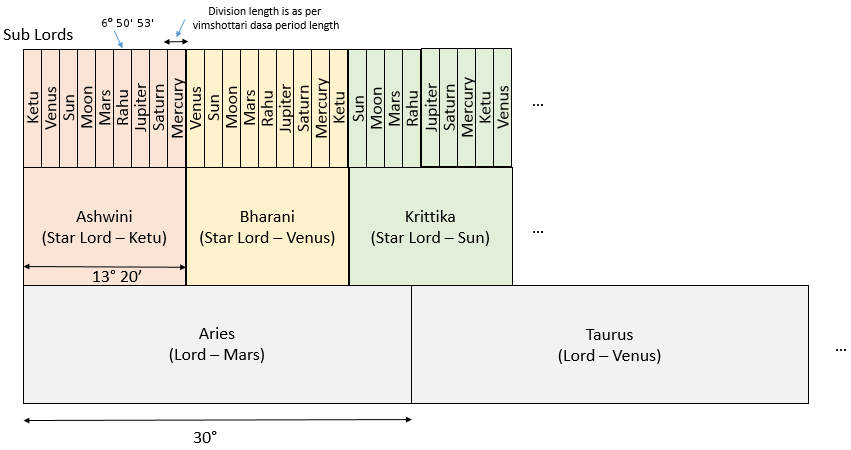Shri Gopalakrishna Rao (Meena) had done initial major contribution to the stellar astrology. He has subdivided all the 27 stars into 243 portions to indicate Kaalamsa positions of a star. Then Shri KS Krishnamurthy further went ahead on this and invented a new concept called Sublord theory (KP astrology). Based on his theory all 12 bhava positions are subdivided into 249 sublord positions. Extending the Shri KS Krishnamurthy theory, Thilak K. Baskaran introduced the cuspal interlinks concepts for the astrological analysis and it is called as Krishnamurthy-Baskaran System or KB astrology.
The core theory of Baskara Astrology is based on the principle, the star lord shows the event and the sub lord determines whether that event is favorable or unfavorable.
In Baskara astrology, if the cuspal sublord of any bhava has interlinks with the 1, 2, 3, 5, 9, and 11th bahvas to its position would always yield favorable results. Whereas with the 6 and 7th bhavas linkage to the position of concerned bhava would yield favorable results moderately. With the linkage of 4, 8, 10 and 12th bhavas to the concerned bhavas would always yield unfavorable results.
Stellarastrolog.in web application uses the KB system for the analysis.
